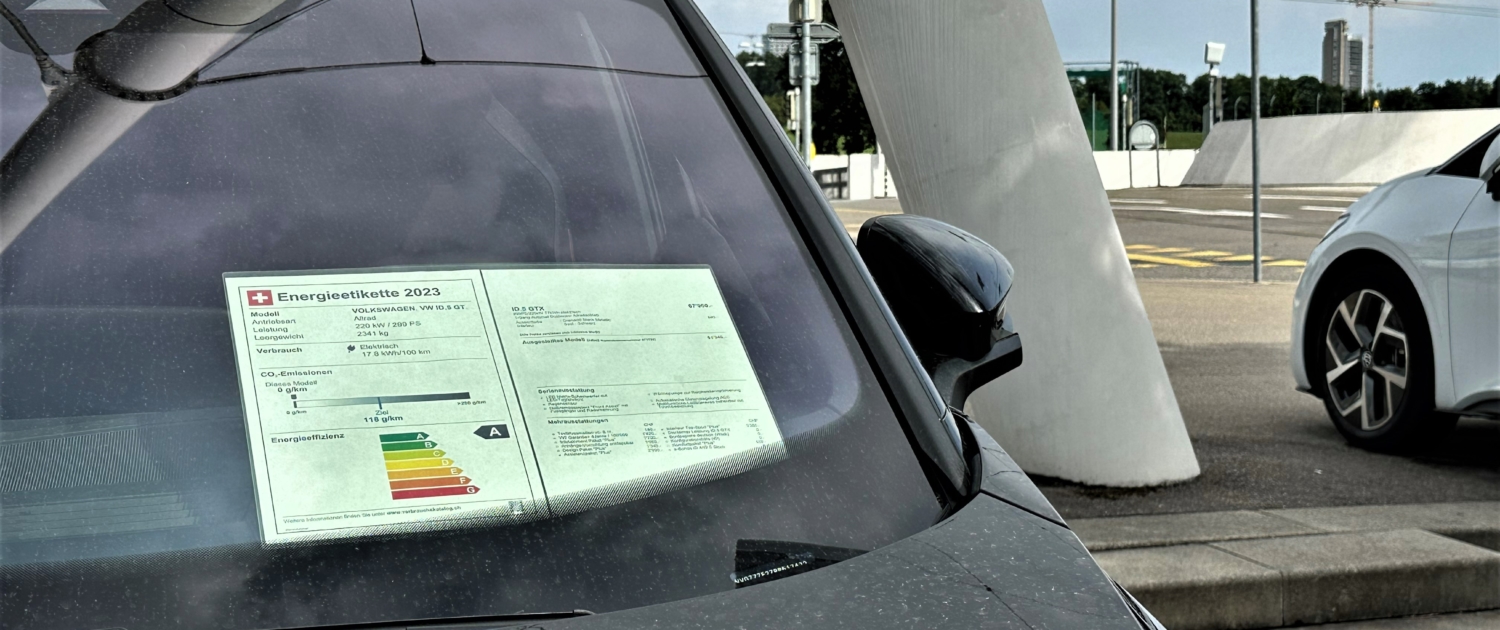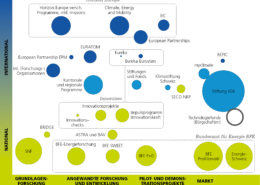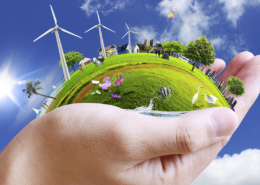Why an e-car is not automatically in category A
Originally, most e-cars received top marks - in terms of energy efficiency. Since January 1, 2023, e-cars are also in category B or C. This has raised questions, especially among e-car owners. Energeiaplus explains why the energy label was adjusted at the beginning of the year and why the basic data is updated annually.
Since 2003, every new car offered for sale must have a clearly visible energy label. The energy label provides information on how energy-efficient a vehicle is - divided into seven categories from A to G. A (green) stands for an energy-efficient vehicle, G (red) for an inefficient vehicle.
But: How do you measure the energy efficiency of a vehicle? And above all: How can diesel or gasoline vehicles be compared with electric vehicles - in terms of energy efficiency?
The keyword here is an admittedly somewhat unwieldy term: primary energy gasoline equivalents. They are the basis for calculating energy efficiency categories. A primary energy gasoline equivalent is a unit of measurement for energy. It is used to compare the energy consumption of vehicles with different drive systems, for example diesel or gasoline vehicles and battery-powered vehicles.
The comparison of the energy efficiency of different drives must be made on a uniform basis. This is the primary energy.
In the case of gasoline-powered cars, the primary energy is the energy content of the gasoline that is filled up at the filling station and the energy required to produce the gasoline: From extraction in Nigeria, for example, to transport to a refinery in Switzerland, to processing at the refinery, to distribution to the gas stations.
In the case of the electric car, primary energy includes the energy needed to produce the electricity and to transmit and distribute it. In Switzerland, this energy comes mainly from hydropower, but also from nuclear power. Imports, for example from countries with fossil power production, are also taken into account.
Difference gasoline equivalents vs. primary energy gasoline equivalents
Gasoline equivalents: This value is used to convert direct consumption, or in the case of e-drive, to convert electricity to "liters of gasoline/100 km". This factor for electricity is for 2023: 0.11 L/kWh. Example: An e-car with a consumption of 18.5 kWh/100 km thus consumes 2.035 liters of gasoline per 100 km when converted to gasoline.
Primary energy equivalents: this value takes into account not only the energy content of the fuels or the electricity consumption of the vehicle, but also the primary energy used to produce the electricity or fuel. This quantity is normalized to the reference fuel, gasoline. For 2023, the primary energy gasoline equivalent of electricity is 0.22 L/kWh. An e-vehicle with a consumption of 18.5 kWh/100 km thus consumes the same amount of primary energy as a gasoline car with a consumption of 4.07 L/100 km.
Every year, the Department of Environment, Transport, Energy and Communications (DETEC) updates and recalculates the basic data of the energy labels. All the basic data is updated, for example the origin mix of the gasoline and diesel used in Switzerland or the origin of the electricity consumed in Switzerland. In addition, the latest findings from science, life cycle assessment methodology and technology are incorporated into the calculations. All results and the underlying data are summarized in a short report and published on the website of the Swiss Federal Office of Energy.
So what does this mean for the e-car, which is placed in a lower category after the reassessment? What is the value of the top grade A? How can buyers keep an overview? What are the energy labels for, too - except as an aid in making a purchasing decision. Energeiaplus asks Thomas Weiss. He is deputy head of the energy-efficient transport section at the Swiss Federal Office of Energy.
Energeisplus: The energy label for passenger cars was adapted and made more ambitious as of January 1, 2023. What were the reasons for this?
Thomas Weiss: Until the end of 2022, the calculation of the category limits was based on the type approval (TG). The type approval includes, among other things, CO2 emissions and consumption data, and groups together different versions of a particular vehicle model in each case. The type approvals were sorted annually on the basis of their respective energy efficiency and divided into seven equally sized groups - the categories A to G.
For internal combustion engine vehicles, multiple type approvals were often created for similar vehicles, with minimal differences in fuel consumption and CO2 emissions. For e-cars, much fewer TGs were created because they do not produce CO2 emissions during operation. This circumstance led to distortions in the calculation of the category limits, as the combustion models were proportionally overrepresented and thus influenced the determination of the category limits. As a result, in 2022, for example, nearly 58 percent of vehicles sold were in category A or B - including models that exceeded the currentCO2 target.
In addition, the TGs are continuously losing importance, as Switzerland - analogous to the EU - is switching to vehicle-specific data with regard to vehicle registration. Therefore, the previous calculation of the category limits had to be adapted. The new method is based on the CO2 target value and ensures that only very efficient vehicles are classified in the A and B efficiency categories. For vehicles with combustion engines, this means that only vehicles that reach or fall below the CO2 target value of 118 g CO2/km will be placed in categories A or B.
How has the new methodology specifically affected the classification into the various efficiency categories?
The evaluation of new registrations in the first half of 2023 shows that there is a generally more balanced distribution of vehicles. The classification has become significantly stricter. The large proportion of models in categories A and B are electric vehicles. This underscores their high energy efficiency compared with the other drive technologies. Only a few models with internal combustion engines are still in category A. The majority of internal combustion vehicles are classified in categories B, C and D and E.
Electric vehicles are also affected by the tightening. Until the end of 2022, these were almost without exception classified in the best category A. What was the impact of the tightening on electric vehicles?
Yes, the tightening has affected all drive technologies - including electric cars. The issue of energy efficiency is also important for electric cars. More efficient e-cars have higher ranges with the same battery sizes or get further with smaller batteries, have lower energy costs and relieve the burden on the energy system. There are also big differences in e-cars in terms of consumption. And these should also be visible on the energy label. In our consumption catalog, we show an overview of all models, including e-cars with poorer efficiency.
As you can see in the table with the top 20 BEV models, the majority of Swiss people opted for efficient electric cars in the 1st half of 2023. 67 percent of new e-cars were in category A, 29 percent in category B. The remainder were spread across categories C, D and E.
Among the top 20 e-cars sold, the share in category A was as high as 70%.
How do you explain to a car buyer that his e-car has now slipped into a worse category?
Well, first I would point out to him that many electric car models also have versions in the A efficiency category. Perhaps he should choose a model with rear-wheel drive instead of all-wheel drive, or a slightly less powerful engine. In addition, there is of course the possibility of buying a smaller vehicle, for example. But large and heavy e-vehicles usually have higher consumption, which is why they are then in category B or C. However, I would also like to clearly emphasize that vehicles with electric drives are always significantly more efficient compared to a combustion engine of the same size and make an important contribution to the decarbonization of traffic.
So what are the top grades worth? How can buyers keep track of them?
A model in category A has lower fuel consumption than a model in a lower category. This means that car buyers benefit from lower operating costs. In some cantons, a vehicle in category A benefits from a discount on motor vehicle taxes. In addition, such a model makes an important contribution to achieving the goals of energy and climate policy.
There are cantons where the energy label is relevant for the amount of motor vehicle tax. The canton of Fribourg, for example. (See here: FAQ Vehicle Tax | OCN) A downgrade then has consequences in the wallet of the vehicle owner. This also leads to inquiries at the SFOE, because the federal government makes the adjustments. What can you answer these vehicle owners?
In the vast majority of cantons where the energy efficiency category is taken into account for calculating the cantonal motor vehicle tax, the time of purchase and first registration is relevant. The canton of Fribourg is the exception here: here, the energy efficiency category is updated annually. It is important for buyers to pay attention to the energy efficiency category when making a purchase. If a vehicle is ordered in 2023, for example, and put on the road for the first time in 2024, one should be careful with regard to the energy efficiency category. We therefore already offer the possibility on the SFOE website to calculate the classification for the coming year: https://www.bfe.admin.ch/bfe/de/home/effizienz/mobilitaet/personenwagen.html
As of 1.1.2024, the energy labels will be adjusted again. What can be expected there?
The last update at the beginning of July this year resulted in only minor adjustments. Only gas and hydrogen models are affected. The CO2 emissions for fuel and electricity supply were also updated. For example, the CO2 emissions for electricity have increased slightly. The reason for this is the higher proportion of electricity from fossil power plants.
In addition, the average CO2 emissions of the new car fleet were determined. This value must be stated in price lists and online configurators. For 2023, the value was 129 g/km (calculated on the basis of WLTP data). For 2024, the new value is 122 g/km (WLTP). The main reason for the decrease is the strong increase in electric vehicles.
You just mentioned the electricity mix. Here, too, we keep getting inquiries in connection with the energy label. People criticize the fact that the energy label is based on a Swiss average mix and does not, for example, take into account the solar power produced on the company's own roof or the renewable electricity product selected from the local energy supplier. What do you say to this?
First of all, it is of course very good and exemplary if you produce renewable electricity yourself or choose a renewable electricity product. But unfortunately we cannot make individual energy labels for every private constellation. The aim of the label is to provide the most transparent comparison possible of the energy efficiency of vehicles with different drive technologies or, within a technology, between more efficient and less efficient vehicles. And this is based on a uniform electricity mix.
The use of the consumer electricity mix - i.e. a mix that reflects the physical electricity flows including imports and exports as well as possible - complies with the scientific specifications for life cycle assessments. And this electricity also includes, for example, electricity from nuclear energy in Switzerland or France, or electricity from German coal and gas-fired power plants. The situation will improve significantly in the future with the expansion of renewable energies in Switzerland, but also in our neighboring countries.
 BFE Brigitte Mader
BFE Brigitte Mader
 9 Vote(s), Durchschnitt: 4,56
9 Vote(s), Durchschnitt: 4,56 BFENeuer Überblick über die Angebote der Energie-Innovationsförderung bis 2022
BFENeuer Überblick über die Angebote der Energie-Innovationsförderung bis 2022  La «responsabilité sociétale des entreprises»
La «responsabilité sociétale des entreprises»  Parc solaire aquatique
Parc solaire aquatique  BuGGFaçades: la manière dont le photovoltaïque et la végétalisation se complètent
BuGGFaçades: la manière dont le photovoltaïque et la végétalisation se complètent 
 shutterstock
shutterstock Cyltronic
Cyltronic
Neuste Kommentare